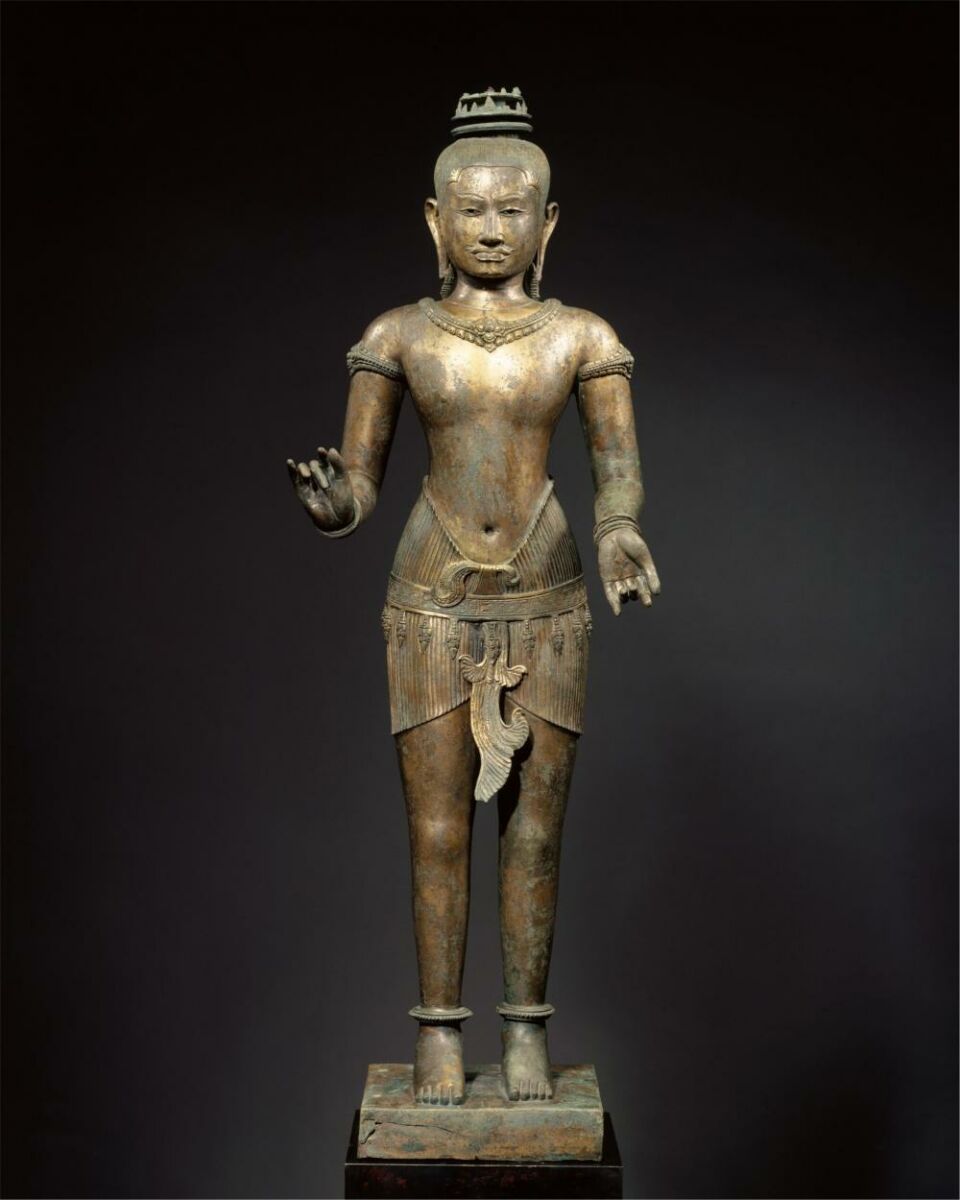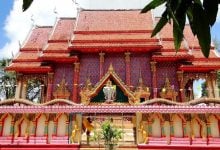900-year-old statue returned to Thailand

A 900-year-old statue, smuggled out of Thailand by a notorious art dealer in 1975, has finally been returned to its homeland after spending over three decades in the possession of the Metropolitan Museum of Art in New York.
The 129-centimetre bronze statue, known as the Golden Boy and believed to depict the Hindu god Shiva, along with a smaller statue of a kneeling woman, arrived at Suvarnabhumi International Airport yesterday. These artefacts were then taken to the National Museum Bangkok, where they will be welcomed with an official ceremony before being displayed to the public.
The Metropolitan Museum of Art returned the two artefacts after verifying their connection to Douglas Latchford, an art dealer charged in 2019 with operating a major network that stole treasures from Southeast Asia. The Golden Boy, believed to have been crafted over 900 years ago, was smuggled by Latchford from Thailand in 1975. According to Latchford’s books, Khmer Bronzes and Khmer Gold, the sculpture was discovered in Ban Yang Pongsadao village in Ta Chong Subdistrict, located in Buri Ram’s Lahan Sai district.
The artefact was part of the Metropolitan Museum of Art’s collection from 1988 to 2023. The identity of the Golden Boy remains a topic of debate among scholars.
Archaeologist Tanongsak Hanwong asserts that the Golden Boy is a statue of King Jayavarman VI, who built the Phimai stone castle in Buriram, not the god Shiva, as many believe. Tanongsak, also a member of the committee for the repatriation of stolen artefacts, argues that the Golden Boy’s style is more similar to the carvings found at the Phimai stone castle rather than the sculptures of Shiva commonly found in the region.
“The Golden Boy is more similar in style to the carvings found at the Phimai stone castle. This suggests that the artefact is a sculpture of King Jayavarman VI (1080 to 1107 AD) of the Mahidharapura Dynasty, who built the Phimai stone castle as the administrative centre of the ancient Khmer Empire.”
Recent findings suggest that the Khmer Empire thrived along the Khorat Plateau before expanding to the Cambodian city of Siem Reap, debunking the previous belief that the empire expanded to the Khorat Plateau from Cambodia, reported Bangkok Post.
The Ministry of Culture and the Fine Arts Department will hold an official repatriation ceremony this afternoon at Issara Winitchai Throne Hall, Bangkok National Museum.
ORIGINAL STORY: Shiva’s Golden Boy statue: A historical repatriation to Thailand
Two revered relics, the Golden Boy statue embodying the Hindu deity Shiva, and a graceful kneeling female figure with uplifted arms, are poised to make a triumphant return from the United States to Thailand.
Set against the backdrop of a highly anticipated repatriation ceremony scheduled for May this year, these cherished artefacts are stirring a wave of national pride.
Culture Minister Sermsak Pongpanit revealed that the Fine Arts Department has been entrusted with orchestrating the intricate repatriation process, working hand in hand with the esteemed Metropolitan Museum of Art. Remarkably, the expenses associated with this historic repatriation will be borne by the museum itself, underlining a profound gesture of respect and collaboration.
Both the United States and Thailand are gearing up to host grand repatriation ceremonies, with the prestigious Bangkok National Museum selected as the venue for the Thai leg of the event, promising a momentous spectacle for all who attend. Following the ceremonious return, these iconic statues will be unveiled to the eager public, ensuring their enduring legacy thrives anew.
Sermsak underscored the Metropolitan Museum of Art’s active role in finalising the logistical aspects of this repatriation, underscoring Thailand’s steadfast commitment to reclaiming its cultural treasures. Notably, this endeavour extends beyond the Golden Boy and the kneeling figure, encompassing artefacts from the ancient town of Si Thep in Phetchabun province, symbolising a broader mission to preserve Thailand’s rich heritage.
This move echoes a precedent set last year when the Metropolitan Museum of Art pledged to return over a dozen pieces of ancient artwork to Cambodia and Thailand. This decision was prompted by ties to art dealer Douglas Latchford, who was embroiled in allegations of involvement in an antiquities trafficking network in Southeast Asia before his passing in 2020, vehemently denying any wrongdoing, reported Pattaya Mail.
In continuation of this noble initiative, the museum is poised to restore 14 Khmer sculptures to Cambodia and two to Thailand, cementing its commitment to rectifying historical injustices and ushering in a new era of cultural collaboration and respect.
Latest Thailand News
Follow The Thaiger on Google News:


























